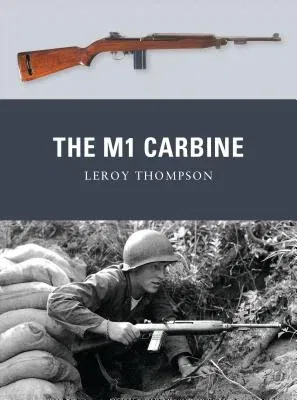Leroy Thompson
(Author)The M1 CarbinePaperback, 22 November 2011

Temporarily out of stock
Free Delivery
Cash on Delivery
15 Days
Free Returns
Secure Checkout

Part of Series
Weapon
Part of Series
Weapon (Osprey)
Print Length
80 pages
Language
English
Publisher
Osprey Publishing (UK)
Date Published
22 Nov 2011
ISBN-10
1849086192
ISBN-13
9781849086196
Description
Product Details
Author:
Book Format:
Paperback
Country of Origin:
CN
Date Published:
22 November 2011
Dimensions:
24.54 x
18.39 x
0.61 cm
Illustrators:
ISBN-10:
1849086192
ISBN-13:
9781849086196
Language:
English
Location:
New York
Pages:
80
Publisher:
Series:
Weight:
258.55 gm